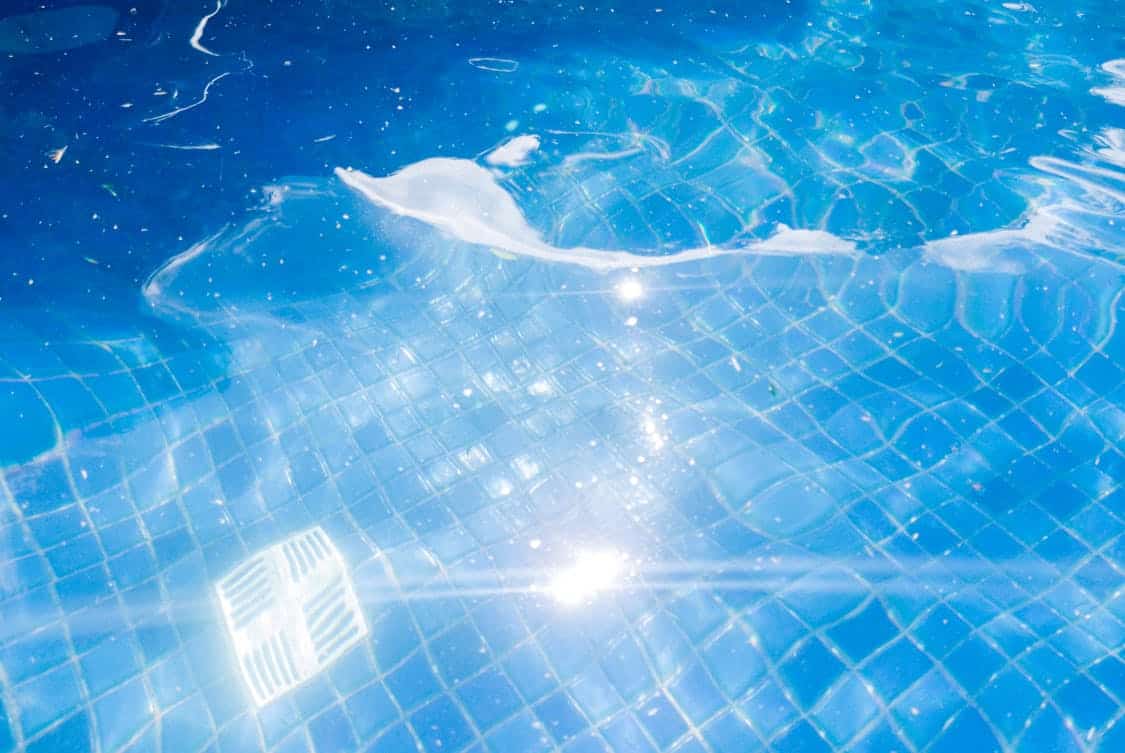Cloudy pool water can spoil a swim and hint at a problem with gear or chemical balance that needs attention. Small, targeted repairs often clear the haze faster than a whole system replacement and keep swimmers safe.
Homeowners who focus on the right fixes tend to spend less time scrubbing and more time enjoying the shallow end. Below are clear, practical notes tying common failure points to the repairs that usually restore sparkle.
Common Causes Of Cloudy Pool Water
Cloudiness usually stems from a handful of repeat offenders: clogged filter media, weak sanitizer levels, suspended fine particles, and early stage algae growth that spreads fast. Organic films from lotions and leaves form a thin veil that scatters light and hides what lies below, while tiny mineral particles create a milky look that simple skimming will not fix.
Run times and visible scum lines give clues about whether the issue is mechanical or chemical, and a prompt checklist helps narrow the culprit. Watching what the water does after a shock or a filter clean often tells you if the job is a quick fix or a longer repair.
Chemical Imbalance And How Repairs Help
Accurate testing points the way when water appears cloudy, and the first set of repairs often target automatic feeders and sensors that report wrong levels. Replacing worn probes, reseating sensor caps, and fixing feeder leaks can restore reliable readings so dosing hits the mark and sanitizer can do its work.
Adjusting total alkalinity and pH then boosts sanitizer efficiency and reduces particle clumping that causes haze, so the chemistry and hardware act in concert. When the instruments are sound, follow up tests behave predictably and the need for repeated chemical slugs falls away.
Filtration System Problems To Watch For
A filter element that has lost structural integrity or a sand bed that has compacted cannot catch the finest debris that clouds water, and signs include short cycles and rising pressure. Inspecting the internals, checking for tears in grids, and measuring flow give a clear picture of whether cleaning will suffice or replacement is on the cards.
Repairs in this area range from simple seal swaps and new O rings to a full media change or grid replacement, each one restoring the filter to its trapping role. When you let the filter do what it was built for, the rest of the system breathes easier and clarity returns.
Pump And Circulation Fixes That Matter
When a pump hums, cavitates, or shows erratic pressure the result is poor turnover and hidden pockets of stagnant water that feed cloudiness and growth. Replacing failing shaft seals, lining up or replacing a bent impeller, and fitting new bearings often restores designed flow and quiets the unit, bringing steady circulation back to the pool.
Air leaks at unions or cracked plumbing let the pump gulp air and lose prime, and sealing fittings or swapping compromised pipe often cures the symptom overnight. If your system shows these signs or circulation problems persist, contacting experts in pool repair metro west can ensure the issue is fixed correctly and prevent further damage to your equipment.
After such mechanical work, balancing run times and confirming flow across all returns and skimmers is key to keeping oils and sunscreens from lingering.
Filter Cleaning Versus Filter Replacement

A thorough pressure wash, a soak in a mild cleaning solution, or a careful backwash will often return a cartridge or sand filter to good health when media fatigue has not set in.
Cartridge elements tolerate a fair amount of maintenance and can live longer with careful care, while sand filters demand periodic bed refresh and occasional deeper service when fines cause clogging that cannot be flushed away.
Some grid assemblies hide small tears that let water bypass the media and a full swap is the honest fix rather than repeated patching. Choosing to replace aged parts rather than patch them can save headaches, as the system will perform more predictably and need fewer emergency fixes.
Valve And Pipe Repairs Often Overlooked
Multiport valves left in the wrong position, spiders that have worn thin, and loose unions create bypass paths that render even a brand new filter far less effective at removing haze. A valve that drifts or leaks lets dirty water by and may show only faint signs until pool clarity starts to suffer, so replacing the worn internals is often the ticket back to steady operation.
Cracked PVC and brittle fittings let air into suction lines or allow small leaks that upset pump performance, and tightening, re gluing, or swapping lengths of pipe restores a true closed system. Fixing these quiet plumbing faults often clears water without changing the chemistry and keeps the whole setup honest.
Dealing With Algae Through Targeted Work
When the water takes on a green tint or the walls feel slippery algae are already present and both physical and chemical measures are needed to beat it back. Brushing surfaces aggressively, vacuuming up dead cells, and running the pump on extended cycles moves materials into the filter while a shock treatment raises sanitizer levels to a point where cells cannot recover.
Some outbreaks come from a failing filter or poor circulation that let growth establish, so repairing the mechanical weak points and improving turnover prevents quick rebounds. Following the mechanical work with a targeted algaecide or phosphate control product helps tidy up and reduces the chance of a repeat visit.
Using Clarifiers And Flocculants Wisely
Clarifiers work by binding tiny particles together so the filter can trap them, while flocculants pull those bits into clumps that settle to the pool floor and are then removed by vacuuming. Correct timing and pairing of these agents with a cleaned filter or a planned backwash prevents overload at the filter and speeds the return to crystal clear water.
Homeowners who treat and then follow through with a focused cleaning save both product and time and avoid sending concentrated loads back into a tired media. Think of these chemical helpers as short term allies in a repair plan rather than a substitute for mechanical fixes.
Routine Maintenance Tasks That Prevent Cloudiness
A modest, repeated routine catches the small failures before they grow into cloudy emergencies and keeps parts from wearing out faster than they should. Weekly test strips or a handheld kit, skimmer and pump basket clearing, and a visual check of seals and valve positions reveal early warning signs that lead to simple repairs.
Replacing a gasket, tightening a union, or changing a corroded clamp today avoids a weekend spent troubleshooting while guests stand on the deck. Put another way, a little attention often keeps a long list of repairs from piling up and lets the pool stay in prime shape for more swim days

